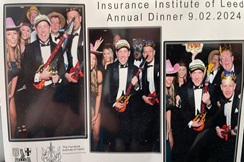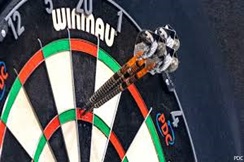Computers Replacing Humans: Risky Business
(blank)
It is basic human nature to mitigate the potential negative outcomes in the things we do.
The first methods of spreading risk were practised by traders as far back as the 3rd millennia BC. Chinese merchants, tasked with navigating treacherous river rapids, would redistribute their wares across many vessels to limit the loss due to any single vessels capsizing.
The 14th century saw for the first time distinct contracts, which allowed insurance to be separated from other kinds of investments (loans, for example), which proved to be a game changer in the maritime industry. The Great Fire of London consumed some 13,000 houses in 1655, thereby changing the matter of Property insurance from ‘one of convenience to one of necessity.’
From its inception, man used insurance to protect itself against loss. Unfortunately, the industry, or rather those who work in it, can no longer expect the same, as it seems man - or rather man’s creation, the machine – is turning against its creator. Slowly but surely, many of the GI roles once thought of as solid job options fall foul to automisation – of the top 20 currently thought to be the most vulnerable, the role of the Underwriter is currently number 5.
Of course, developments in technology in any industry bring change; it’s inevitable. Change, although sometimes resisted, is for the most part positive; it improves productivity, which invariably reduces costs. But as various ‘disruptive changes’ affect the general insurance industry (e.g. the advent of driverless cars, drones and so on), insurers are increasingly using algorithms to assess risk and the costs applied to it, rather than using people. Starting this year, the Japanese insurer, Fakoku, is rolling out a plan to replace 34 Claims Handlers with IBM’s ‘Watson Explorer’. Scanning hospital records and other documents in a fraction of the time, it will enable the remaining human workers to process claims much faster.
But how did we not see this coming? As far back as 1933, Oxford University academics predicted ‘widespread technological unemployment’ in the future. Add to that ‘Big Data’ and its continued rise in popularity, and it appears as though the writing was already on the wall.
But can computers really do it all? Not yet, it seems. They struggle with perception and are therefore unreliable in a cluttered field of view. They rely on patterns and trends, which affords them only a limited ‘vision’ in the field of war for example, or the aftermath of a severe catastrophe, where the situation is unstable. People are still very much in demand in these scenarios.
Allan Parker, Director and Underwriting recruitment specialist at Aston Charles comments, “we have seen a big decline in the number of mainstream SME type underwriting vacancies over the last couple of years, with many composites significantly reducing their headcount. Having said that, advances in technology, and the industry focus on niche business, have created some very interesting career opportunities within the underwriting arena. The role of the Underwriter is certainly not over for humans, but I would definitely advise any Underwriter who is seeking a long-term career, to either specialise in a niche area, or to learn to write complex business, in order to out-last the computer.”
As our lives become more diverse, so will the challenges to the Underwriter. Insurers should be wary of losing the ‘good guys’. To survive, therefore, it is important that the next generation has the tools and the support to evolve. David Williams, Managing Director of Underwriting at AXA, concedes that, “you now need a much more numerated Underwriter who is capable of handling and understanding large amounts of data. But you also need people who can talk to customers.”
So, dear Underwriter, take heart. They can’t do it totally without you. But to succeed, you’re going to have to embrace the technological changes and use them to support the process as we ‘boldly go where no man has been before’ because as the Robot Borg once said, “resistance is futile!”
In the meantime ‘Live long and prosper’.









